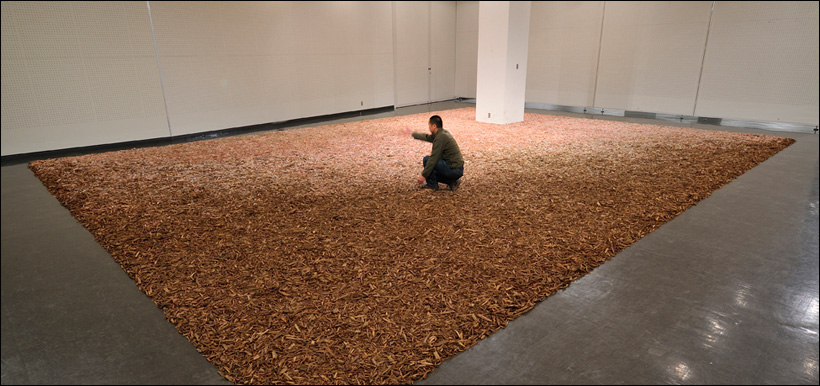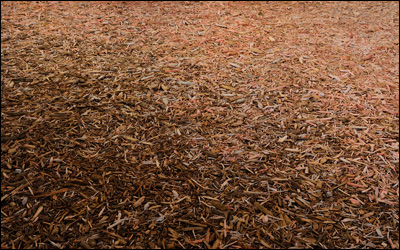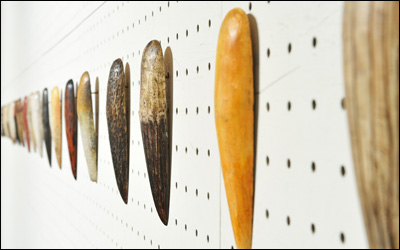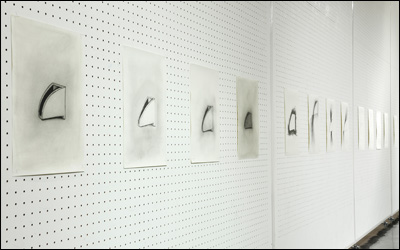




Two Artists from Mexico-From Reality and the Ethnological World
When I first met Mexico, in my eyes it was full of various contradictions. I have always felt that I have something like entangled yarn in my mind and Mexico seemed to be projecting all its lines and characteristics to the outside.
Sergei M. Eisenstein, "Collected Works of Eisenstein", Kinema-Junposha.Co.Ltd
Mexico was the mecca for aspiring avant-garde artists in the 1920's and 1930's. Sergei M. Eisenstein (1898-1948), who became a great figure in film history with "Battleship Potemkin" (1925), was one of the artists who was fascinated by Mexico and discovered something Mexican within him.
It was "The Mexican" (1920) written by Jack London that Eisenstein was involved in Mexico for the first time. He made costumes and installations for its stage. Then, the fateful encounter with Mexico came as a meeting with Diego Rivera, one of the leaders of the Mexican Muralista Art Movement. This meeting and the trips to visit Diego lead Eisenstein to create his phantom master piece "QUE VIVA MEXICO!" (1930) and further exploration of this land.
However, why was he so hung up on Mexico?
At that time, ethnological studies which came from the colonial policy of the West (toward Africa, Central and South America, and Oceania) was inspiring artists who were feeling the limit of modernism. Eisenstein might have found his wild nature (ethnological study) and modern soul (avant-garde art) mixed in that land like other artists.
Writing so far, I come across a question; Does Mexico still fascinate us as it did in the days of Eisenstein? One of the answers or experimental proof of such is the exhibition by two expressionists from that country that throw questions to us living in Japan today.
The two artists are Manuel Velazquez, born in Chiapas, and Ryuichi Yahagi, a Japanese man living in Veracruz.
Velazquez had expressed the Mexico within him, to question his identity in a sense. In his work, the age before Mexico was conquered by Spain and Spanish (catholic) elements are woven together. Through a unique delicate color, simplified form, and multilayer matiere, he has been exploring the history or time inside him. It was the same kind of exploration as Eisenstein who lived in the modern age and discovered something in Mexico in his identity. However, the crucial difference between the two is that while one could see Mexico from the outside, the other could only identify Mexico by carving it out from his blood and flesh.
Let us see the works of Velazquez which could be said as part of his body. In the motifs of his works, animals, hearts, and bodies from Mexican folktales or legends, and Jesus, churches and crosses from Catholicism brought by the Spanish are mixed together.
Recently, these motifs are becoming more simple and strong. We can see it in his drawing of boxes with enigmatic openings and sculptures of seeds with beautiful patterns in the coming exhibition. The works must be one consequence of the quest of one Mexican artist who tried to discover his identity.
The other artist of this exhibition is Ryuichi Yahagi. As a Japanese man living in Mexico, he has been addressing this country by producing art works. He was born and started his career as an artist in Japan, where modernization is complete. He held a solo show "How We Stand" (1994) in his homeland where the past and present co-exist in a different way from Mexico, to explore his stand point. However, after moving to Mexico, his source of inspiration shifted to daily lives. Instead of being immersed in the course of day-to-day activities in his own country, he chose to have work and a family in Mexico where a different time flows. Sympathy and feelings of strangeness to life in a foreign country evolved into "Searching for Our Lady of Guadalupe", a serial project to search for the names which came from the Madonna legend in Mexico.
This artist who had been inspired by daily lives had told me about his idea of "Carpet of Rubble-Blooming Abundant Flowers on Rubble", a work for this exhibition. I expected that it would be a work that captures the reality of Japan where every day lives were leveled to dust so suddenly by the Great East Japan Earthquake, from Mexico.
Mexico has a religious rite called "Alfombras de Aserrin" which draw pictures with sawdust on roads. In his work, Yahagi will emulate this method and paint cherry blossoms, a Japanese symbol. Rubble from the towns destroyed by the natural disaster will be turned into the blooming flowers of spring (which is also one phenomenon of nature). By illuminating the extraordinary state after destruction of daily lives, it makes us ponder about the reality Japan is facing.
These two artists from Mexico pose questions to us through their works, so let us offer an answer.















